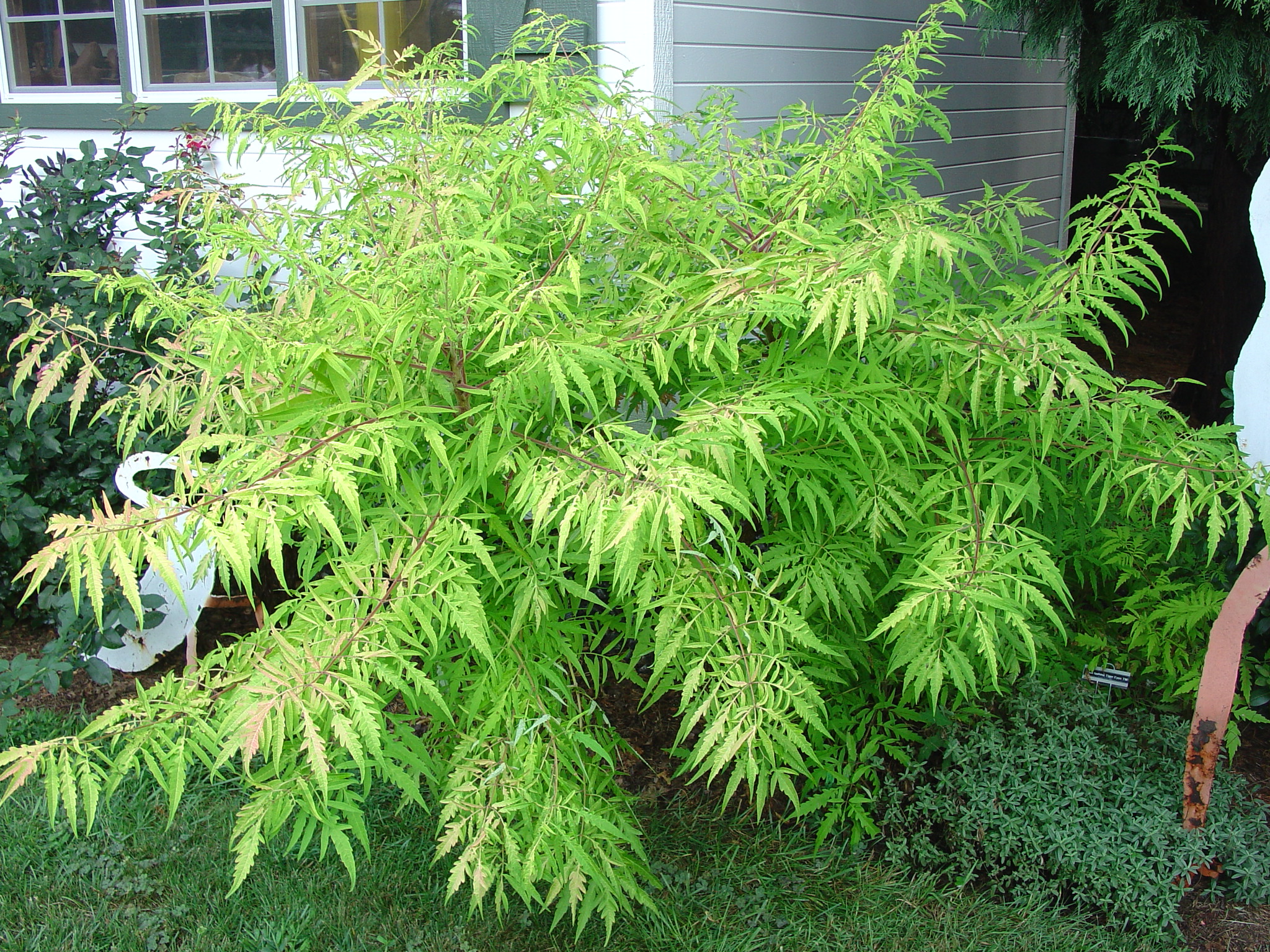
Tiger Eyes® Sumac Far Less Aggressive What Grows There Hugh Conlon, Horticulturalist
A glowing, gold-leafed variation on the rugged, reliable Staghorn Sumac. The finely cut foliage and red tinted stems add rich texture and touch of color all season long. Flowers appear in late spring with male and female flowers on different plants. Both produce tall panicles of tiny yellow flowers. The female flowers develop into a cluster of.

Rhus typhina 'TIGER EYES'
Sun Shrubs. Tiger Eyes Staghorn Sumac (Rhus typhina) - 3 Gallon Pot. Staghorn Sumac, scientifically known as Rhus typhina, is an exotic looking but very hardy North American native with a tropical look and feel. 'Tiger Eyes' is a dwarf form that takes Staghorn Sumac to a whole new level with a more compact habit to only 6 to 8 feet tall and.
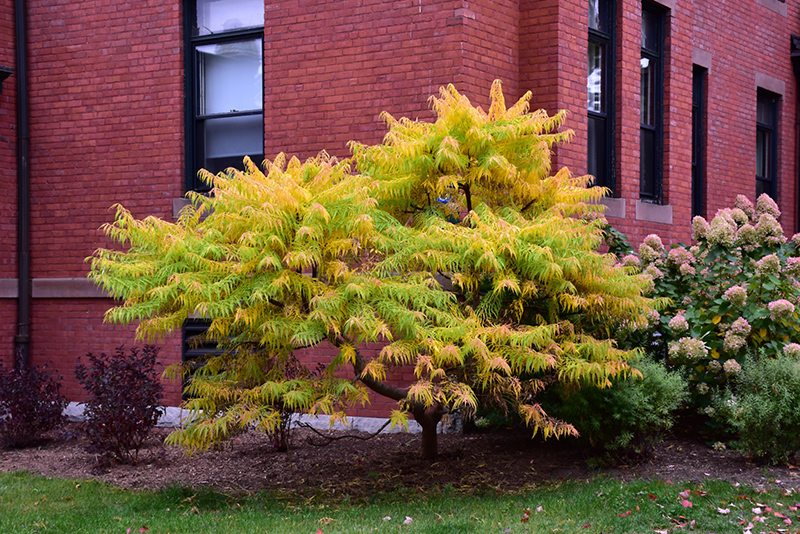
Rhus typhina Tiger Eyes C3/P19 5060 CM купить, отзывы, фото, доставка Совместные покупки sp
The Plant Guide Browse the Full Plant Guide Tiger Eyes sumac Rhus typhina 'Bailtiger' rus ty-FEE-nah Audio Lemon-lime foliage, fuzzy stems, and intense fall color make this sumac cultivar a standout. It grows into an upright, rounded form about 6 feet tall and wide. New growth emerges chartreuse. Fall brings leaves of yellow, scarlet, and orange.

Rhus typhina ‘Tiger Eyes’ Staghorn Sumac 3Gallon Catskill Native Nursery Plant Shop
Description: Tiger Eyes® cutleaf staghorn sumac is a cultivar of staghorn sumac ( R. typhina ). It is smaller than staghorn sumac, reaching 6 ft tall and wide. The foliage is a bright yellow-chartreuse, turning orange and scarlet in the autumn. It can form large colonies by root suckers, but less so than other sumacs.
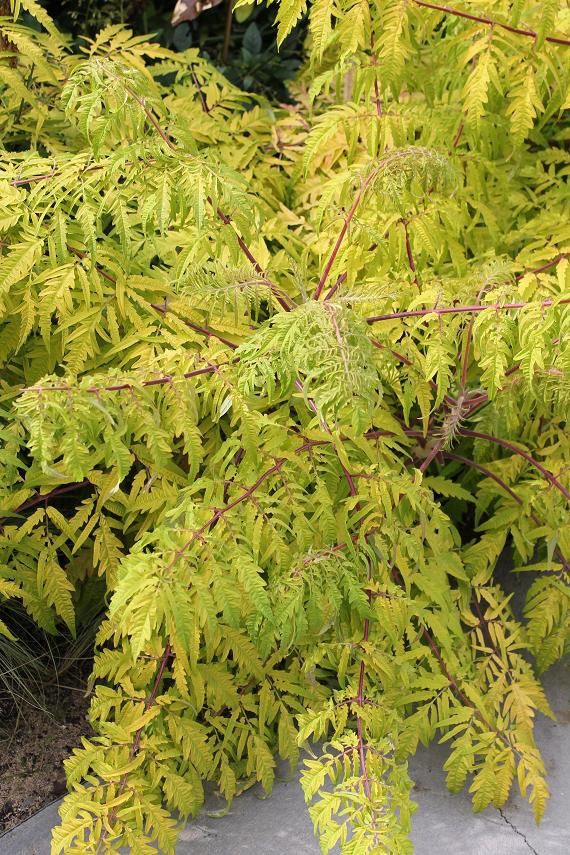
Rhus typhina "Tiger eyes" passeur de plantes
Barkley, 1937, Barkley, 1963 removed the allied genera and defined Rhus (Rhus sensu stricto) based on the presence of red drupes with red glandular hairs on the fruit wall.Data from morphology, wood anatomy, and chemistry (Young, 1975, Young, 1979), and nuclear ribosomal ITS sequences (Miller et al., 2001) support the monophyly of Rhus s. str. Rhus s. str. comprises approximately 35 species.
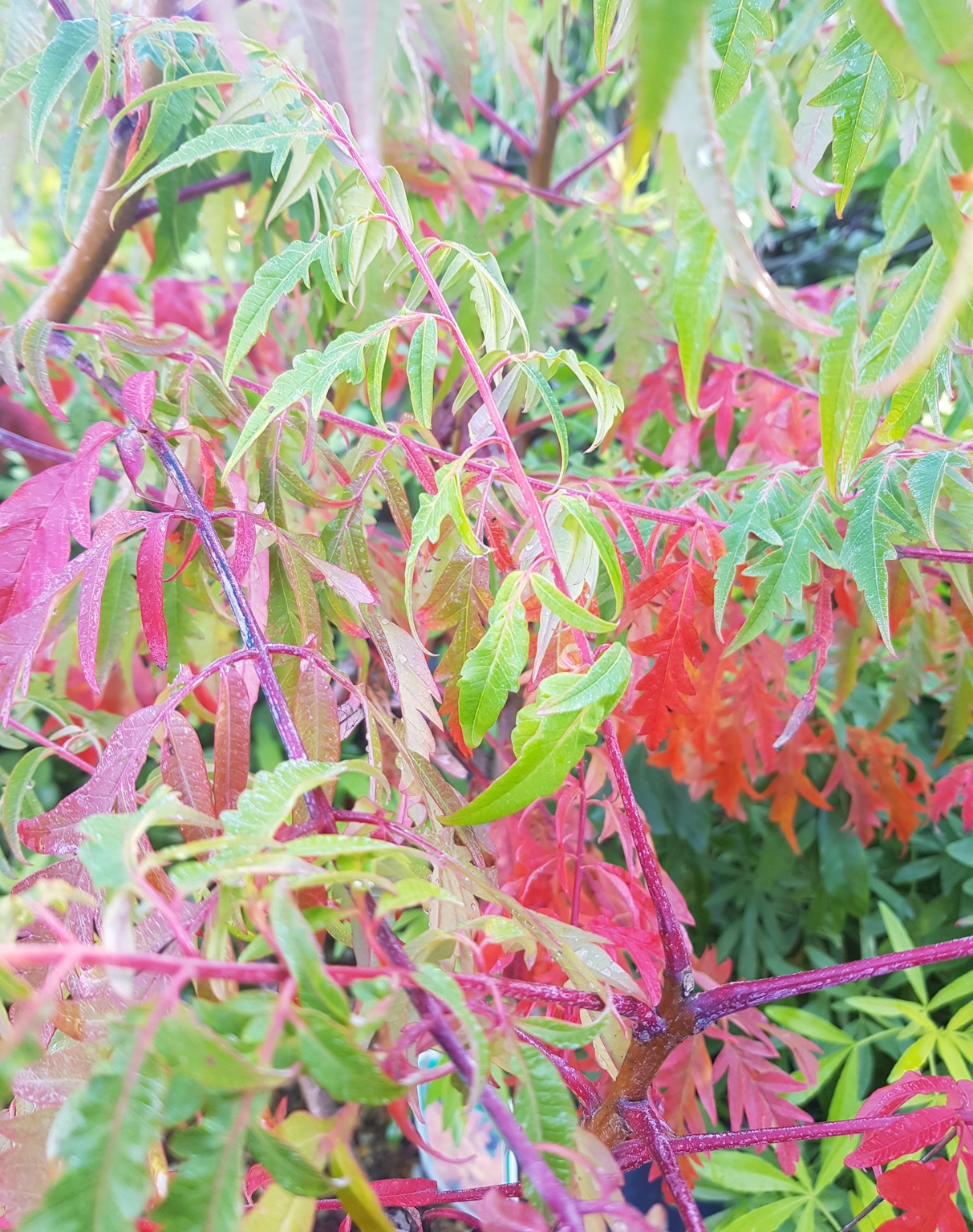
Rhus typhina Tiger Eyes 7.5 litre Stewarts Garden Centre
Tiger Eyes is synonymous with Rhus Typhina Bailtiger and makes a pretty specimen tree in compact or coastal gardens. It is suckering, but not as vigorous as other Rhus varieties. Height And Spread of Rhus Typhina Tiger Eyes Stag's Horn Sumach Tiger Eyes reaches a maximum height of 2.5 metres and spreads 4 metres in 10-20 years

Rhus typhina ‘Bailtiger’ (TigerEye Sumac) Stonepocket Know What You Grow
Plant description. The finely dissected, fern-like leaves of this handsome shrub emerge each spring in a bright chartreuse flush, but they soon take on the rich golden tones that last throughout the summer. It's in the autumn however that this plant becomes even more eye-catching, as then the yellow leaves turn dazzling shades of red and orange.
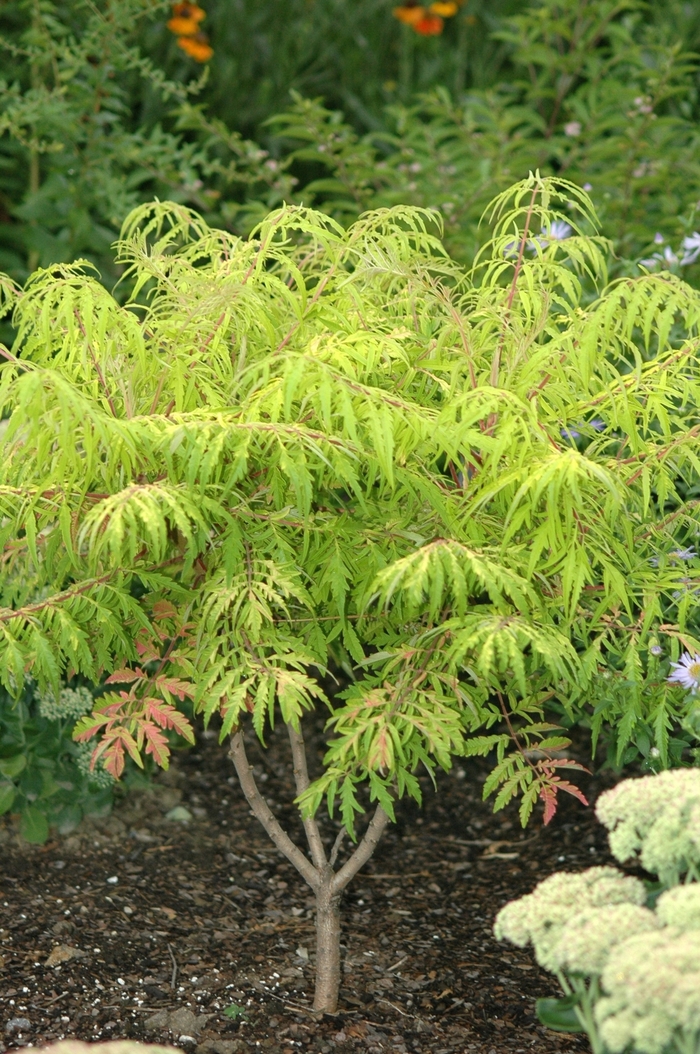
Rhus typhina ‘Tiger Eyes’ (Tiger Eyes Staghorn Sumac) Maple Hill Nursery
Rhus; Staghorn Sumac (Rhus typhina Tiger Eyes®) General Plant Information ; Plant Habit: Shrub: Sun Requirements: Full Sun to Partial Shade: Water Preferences: Mesic Dry Mesic Dry: Minimum cold hardiness: Zone 4b -31.7 °C (-25 °F) to -28.9 °C (-20 °F) Maximum recommended zone: Zone 8b: Plant Height:
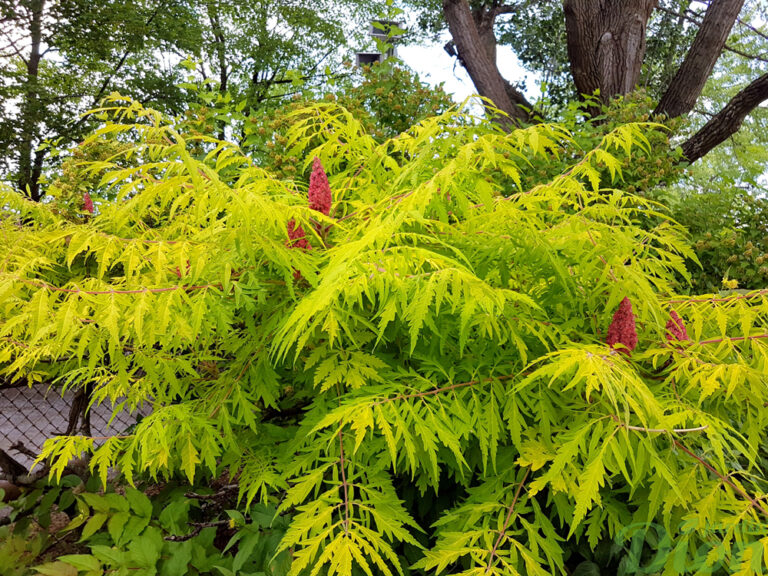
rhus typhina tiger eyes Jardin Dion
Rhus typhina Tiger Eyes® PP16185: A moderate growing broadleaf deciduous tree with gold foliage. Attractive to birds and butterflies. To grow well, it prefers sun - mostly sun and even moisture - regular water. Prefers to be dry in winter. Grows best in well-drained and rich soil. Plant type: tree Plant family: #Anacardiaceae Foliage: deciduous gold Mature size: 10 FT - 15 FT - wide, 10 FT.
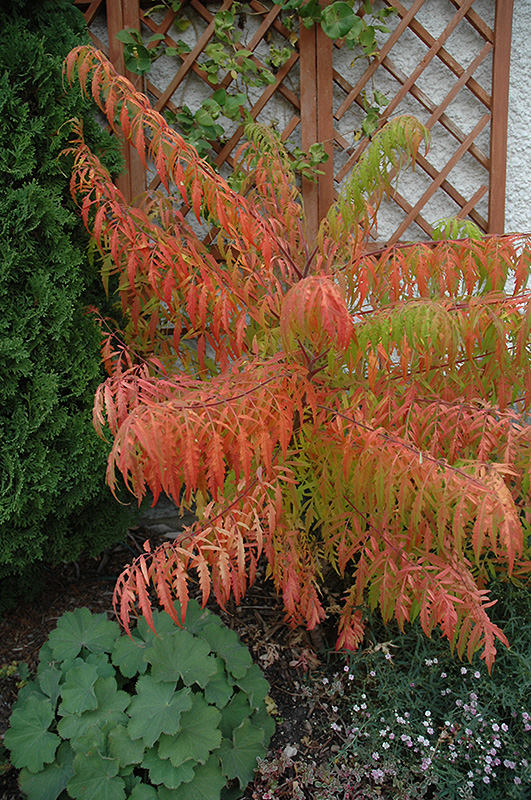
Tiger Eyes Sumac (Rhus typhina 'Bailtiger') in Inver Grove Heights, Minnesota (MN) at Gertens
Rhus typhina Tiger Eyes® has striking orange and red fall foliage, and is an exciting new native for tough sites, from Bailey Nurseries in Minnesota. Prefers a dry site. PRN Preferred: Amazing foliage color both summer and fall, especially good in dry sites. Height 6 Feet Spread 5 Feet USDA Hardiness Zone 3 Current Availability
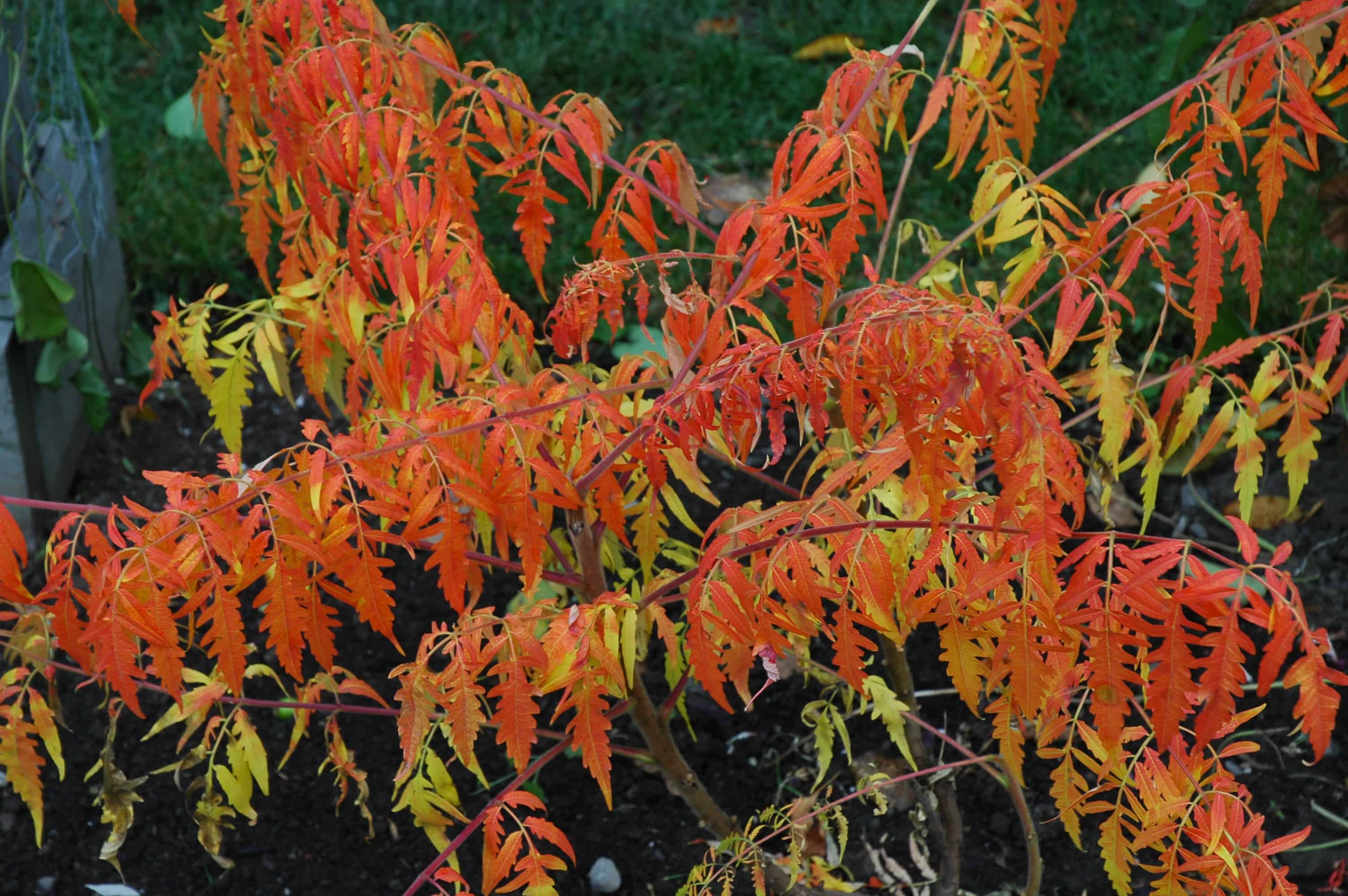
Rhus typhina Tiger Eyes Pépinière Locas
Rhus typhina 'Tiger Eyes' Stag's Horn Sumach Hardy FROM £39.99 100% (1 Review) Garden Club Members Price: FROM £35.99 JOIN TODAY Eye-catching focal point A striking architectural plant Provides a spectacular autumn display that will brighten up any border Delivery Information View Product Description Choose available pack sizes: Add To Basket

Photo 51075 Rhus typhina Tiger Eyes® PP16185 plant lust
Staghorn sumac, Rhus typhina, a member of the Anacardiaceae (cashew or sumac) family, is a scraggly-looking shrub commonly seen growing on roadsides and other disturbed areas through the eastern U.S. and Canada.

Rhus typhina 'Bailtiger' Tiger Eyes Staghorn Sumac Kelly Nursery LLC
Rhus typhina 'Tiger Eyes' is a particularly attractive form of stag's horn sumach. A dwarf variety, it's said to be less invasive than the species. The finely divided foliage is bright golden yellow, turning orange and red before falling in autumn.

Rhus typhina Tigers Eye Tuin
Overall plant More Images Common Name: staghorn sumac Type: Deciduous shrub Family: Anacardiaceae Zone: 4 to 8 Height: 3.00 to 6.00 feet Spread: 3.00 to 6.00 feet Bloom Time: July Bloom Description: Greenish-yellow Sun: Full sun to part shade Water: Dry to medium Maintenance: Medium Flower: Showy Leaf: Colorful, Good Fall Fruit: Showy
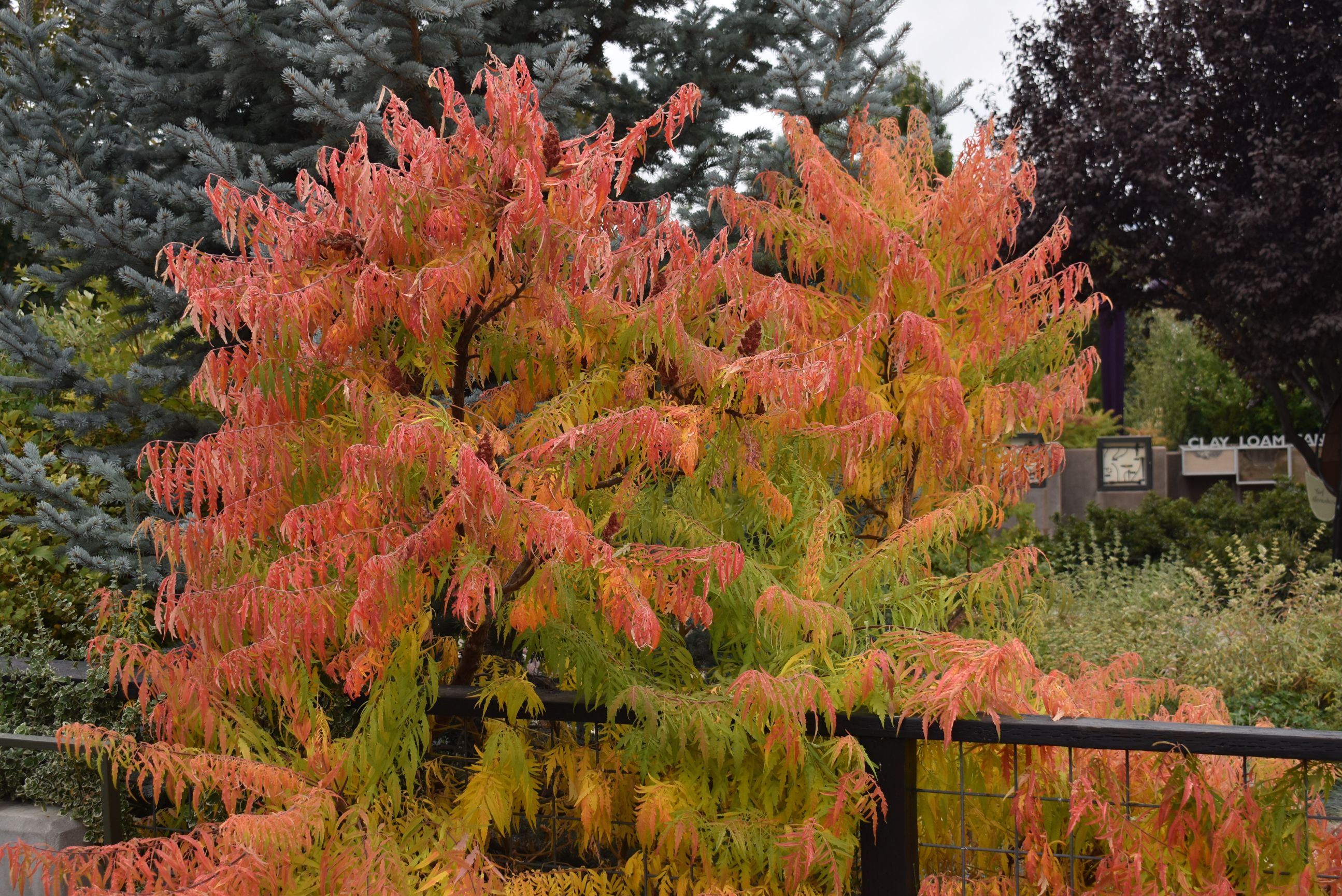
tiger eye sumac tree zone Cool Stuff Column Photo Gallery
Types Veg Trees Rhus typhina Tiger Eyes ('Bailtiger'PBR) stag's horn sumach [Tiger Eyes] A compact, deciduous, suckering tree with finely divided foliage which emerges green, turning to golden yellow then orange and red as autumn approaches. Greenish-yellow flowers appear from June to August followed by dense clusters of red fruits in the autumn.

Rhus typhina 'Tiger Eyes' (='Bailtiger') Fluweelboom De Tuinen van Appeltern
Tiger Eyes® Cutleaf Staghorn Sumac, scientifically known as Rhus typhina 'Bailtiger', is a noteworthy deciduous shrub due to its visually stunning attributes. Recognized for its unique chartreuse foliage that transitions into intense, fiery oranges and scarlets in the fall, this sumac variety adds vibrant colors to any landscape.